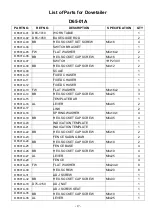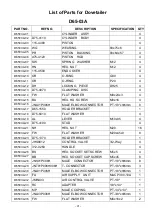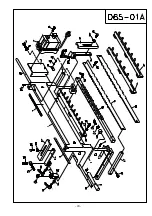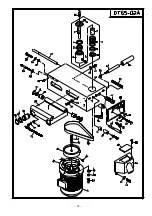
- 14 -
Operation
NOTE: The following are basic dovetailing procedures
as they apply to this machine, and are not intended to
be a full course of instruction in making dovetails.
Refer back to the terminology on page 2 if needed.
The Dovetailer can be used to make joints in drawers,
boxes, cabinets, etc. Instructions in this manual are
based upon making a drawer consisting of FRONT and
BACK pieces, and two SIDE pieces. FRONT and
BACK pieces are placed horizontally on top the
machine table; SIDE pieces are placed vertically.
No matter the project, prevent mistakes by laying out
the pieces beforehand according to how they will be
assembled. Place them with the inside facing up, and
label the mating edges.
Before cutting on what is to be the finished piece, the
operator should make test cuts on scrap wood to make
sure all settings and adjustments are correct.
IMPORTANT:
Make sure the workpiece has been cut
square before making dovetails. An out-of-square
workpiece will result in poor dovetail joints.
1. Check that all the following has been set correctly
(See “Adjustments” above):
¾
proper pitch of Template Bar
¾
proper Indication Template
¾
Vertical and Horizontal Fence positions
(offset from each other by half the pitch of the
template bar)
¾
height of Clamping Cylinders for workpiece
thickness
¾
proper Fixed Chaser, with no cutter
interference
¾
height of Cutter
2. Move the headstock all the way to the right and out
of the way.
3. Connect the air supply and the electrical power to
the machine.
Keep fingers clear of clamping
cylinders.
4. Place the drawer RIGHT SIDE against the vertical
table and on top the fixed chaser. The RIGHT SIDE
should be flush against the fence, with the bottom
groove facing outward and opposite the fence
(Figure 24).
Figure 24




























